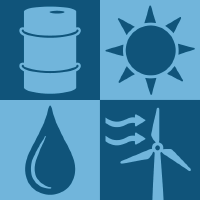Topic Menu
► Topic MenuTopic Editors








Solid Waste Management
Topic Information
Dear Colleagues,
The Topic “Solid Waste Management”, includes all kinds of solid waste: municipal, industrial, commercial, street, bulky, agricultural, sludge (not only sewage sludge), all kind of low or high energy content fuels from solid and liquid waste: new and conventional, etc. (e.g., refuse derived fuel, solid recovered fuel, bio-methane, etc.). Regarding their management, this topical issue deals with aspects from the cradle (generation and collection) to disposal/use/reuse etc.: thus, it includes also residues from raw materials generated by the treatment of selective collection streams and from the different steps needed for the production of conventional and innovative fuels. All the conventional and innovative ways to treat/use the above-mentioned wastes and their residues as main or second materials are part of this topic: starting from landfill mining, biological and thermal ones but also the new ones (HTC), single or combined, already approved or in a research or developing stage represents main keys of this topic. The environmental, economic, human health issues connected with the management of these wastes are also subject to be developed and presented in the topic papers. Public perception, safety and development strategies for each step of the of entire waste management represents also one of the main subject of this issue. The topic is open to every context: low income, medium income, and high income countries. Articles on both hazardous and non-hazardous waste will be accepted for peer review. Review papers will be considered if suitable to give a really comprehensive vision of one or more aspects of waste management. Sustainability and circular economy are expected to be the core of most of the proposed articles. Sustainability will be seen not only from the environmental point of view; economic and social sustainability in waste management have the same importance. The single options of treatment will be analyzed both zooming on the processes and analyzing technological aspects. Articles on COVID-19 and waste management are welcome to help the sector to face with the present and future pandemics.
Prof. Dr. Elena Rada
Prof. Dr. Marco Ragazzi
Dr. Ioannis Katsoyiannis
Prof. Dr. Elena Magaril
Prof. Dr. Paolo Viotti
Prof. Dr. Hussain H. Al-Kayiem
Dr. Marco Schiavon
Dr. Gabriela Ionescu
Dr. Natalia Sliusar
Topic Editors
Keywords
- circular economy
- sustainability
- environment
- social
- economic
- management
- waste
- solid
- COVID-19
- municipal
- special
- industrial
- commercial
- street waste
- bulky waste
- agricultural waste
- sludge
- collection
- treatment
- residue
- disposal
- recycling
- low income
- medium income
- high income
- hazardous
- non-hazardous
- RDF
- SRF
- source separation
- selective
Participating Journals
| Journal Name | Impact Factor | CiteScore | Launched Year | First Decision (median) | APC |
|---|---|---|---|---|---|

Sustainability
|
3.3 | 7.7 | 2009 | 19.3 Days | CHF 2400 |

Energies
|
3.2 | 7.3 | 2008 | 16.2 Days | CHF 2600 |

Resources
|
3.2 | 7.2 | 2012 | 24.6 Days | CHF 1600 |

Recycling
|
4.6 | 8.9 | 2016 | 20.9 Days | CHF 1800 |

Environments
|
3.7 | 5.7 | 2014 | 19.2 Days | CHF 1800 |

Preprints.org is a multidisciplinary platform offering a preprint service designed to facilitate the early sharing of your research. It supports and empowers your research journey from the very beginning.
MDPI Topics is collaborating with Preprints.org and has established a direct connection between MDPI journals and the platform. Authors are encouraged to take advantage of this opportunity by posting their preprints at Preprints.org prior to publication:
- Share your research immediately: disseminate your ideas prior to publication and establish priority for your work.
- Safeguard your intellectual contribution: Protect your ideas with a time-stamped preprint that serves as proof of your research timeline.
- Boost visibility and impact: Increase the reach and influence of your research by making it accessible to a global audience.
- Gain early feedback: Receive valuable input and insights from peers before submitting to a journal.
- Ensure broad indexing: Web of Science (Preprint Citation Index), Google Scholar, Crossref, SHARE, PrePubMed, Scilit and Europe PMC.

